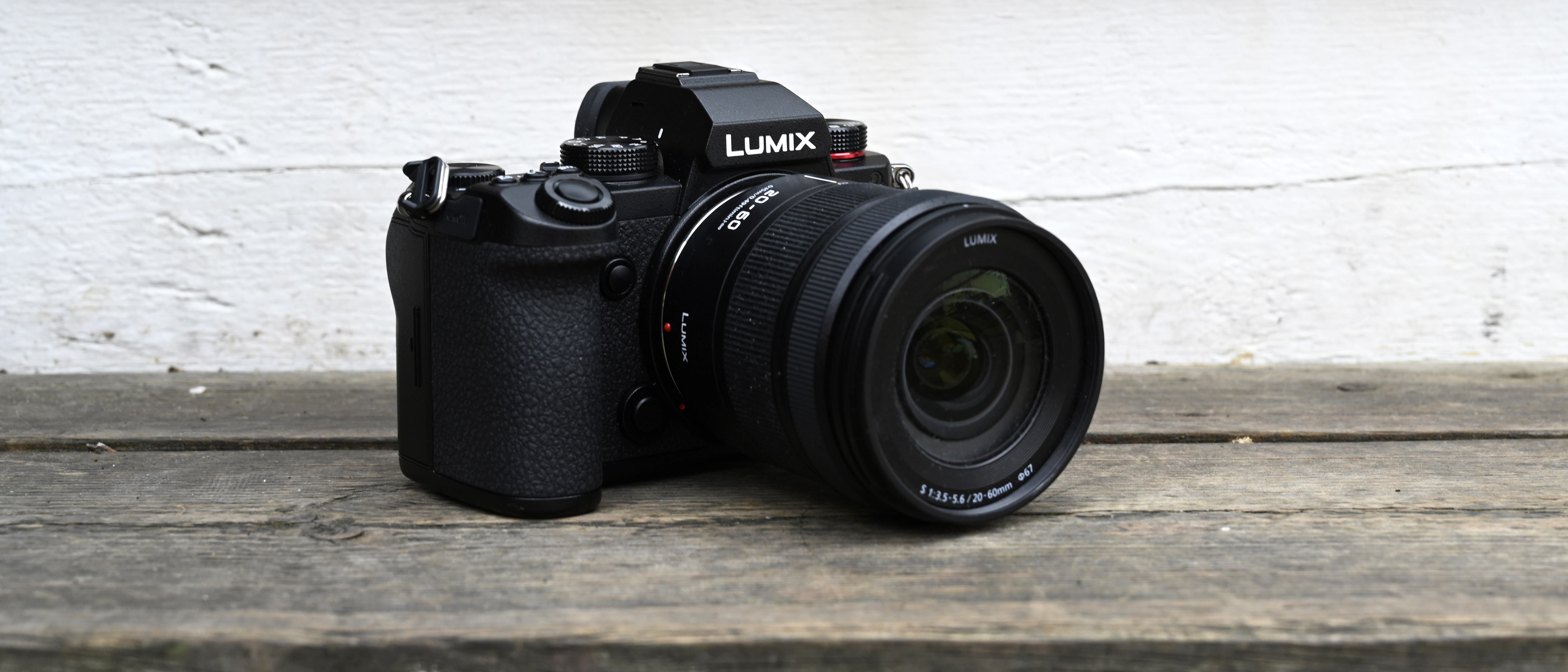TechRadar Verdict
Panasonic has clearly learned its lessons from the criticisms made of its original full-frame mirrorless cameras. The Panasonic S5 blends a full-frame sensor with a small, but ergonomic, body. The result is a camera that should appeal to a wide variety of creators – with a good range of video specs, it's a fantastic hybrid that comes highly recommended.
Pros
- +
Small size and weight
- +
Good range of controls
- +
Excellent video specifications
Cons
- -
No full-sized HDMI port
- -
Large lenses affect compact size
- -
Lacks best-in-class autofocus
Why you can trust TechRadar
Two-minute review
The Panasonic Lumix S5 is the baby brother of the company's existing full-frame mirrorless cameras, such as the Panasonic Lumix S1. Available at a cheaper price point, it also has a much smaller and lighter body than the rest of the S1 range – in fact, it’s even smaller than the Panasonic Lumix GH5, which has a Micro Four Thirds sensor.
At the heart of the Panasonic S5 is the same 24.2MP full-frame sensor that we’ve already seen in the S1, so we already know that it’s capable of producing some fantastic imagery. To place that in a body that is more like a Micro Four Thirds camera is very exciting and should, in theory, give you full-frame performance in a much more compact package. Does the reality match up to the promise? In most ways, the answer is yes.

Price and release date
Design
Specs and features
Performance
Image and video quality
Should I buy it?
With this model, Panasonic is attempting to address the criticisms made of earlier S range cameras – namely, how large, heavy and expensive they were, along with their slightly lackluster autofocus.
It’s taken each of those key points and addressed them very well. The smaller and lighter body is great to use, and when used with the 20-60mm kit lens, makes for a great travel or everyday camera. The only drawback is that while the 20-60mm lens is nicely sized, other L Mount lenses from Panasonic are much larger – so in terms of overall system size, it’s not quite so straightforward.
Still, the pricing is good, and compares well with other full-frame models on the market, while the performance of autofocus has noticeably improved too.
There have of course been a couple of compromises to account for the smaller and cheaper body. The electronic viewfinder, while offering a decent 2.36-million dot resolution, doesn’t match the 5.76m-dot viewfinder of its older (and more expensive) siblings. It’s also get a relatively pedestrian maximum frame-rate of 7fps – and although the possibility using 6K/4K Photo compensates a little, it’s unlikely to be a camera that's appealing to action shooters.
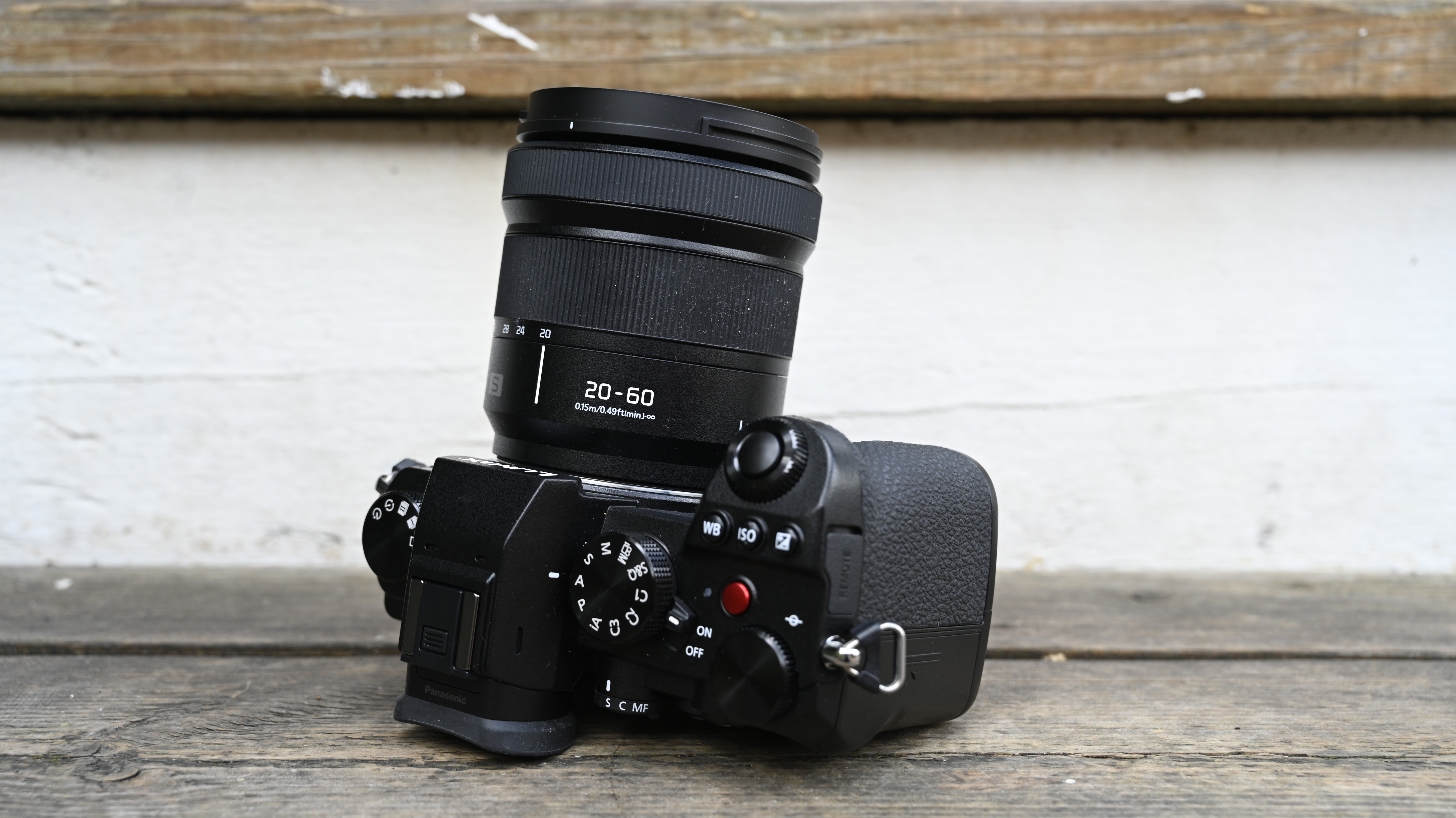
Vloggers, on the other hand, will likely be very tempted. It's got several features which make it one of the best YouTube cameras around. It's also one of the best video cameras, thanks to its uncropped 4K/30p shooting, V-Log support, time-lapses, anamorphic 4K compatibility and more to lure in video shooters. The dual memory card slots and articulating screen also make sense in this scenario, while the wide-angle 20-60mm kit lens is also a bonus, too.
Sign up for breaking news, reviews, opinion, top tech deals, and more.
Overall, we’ve got a camera here that ticks a heck of a lot of boxes. A full-frame sensor, a neat, ergonomically friendly body, excellent video specs and a host more besides. It feels very much like the camera that sees Panasonic finally finding its feet with the S series, and gives us hope that more is yet to come.
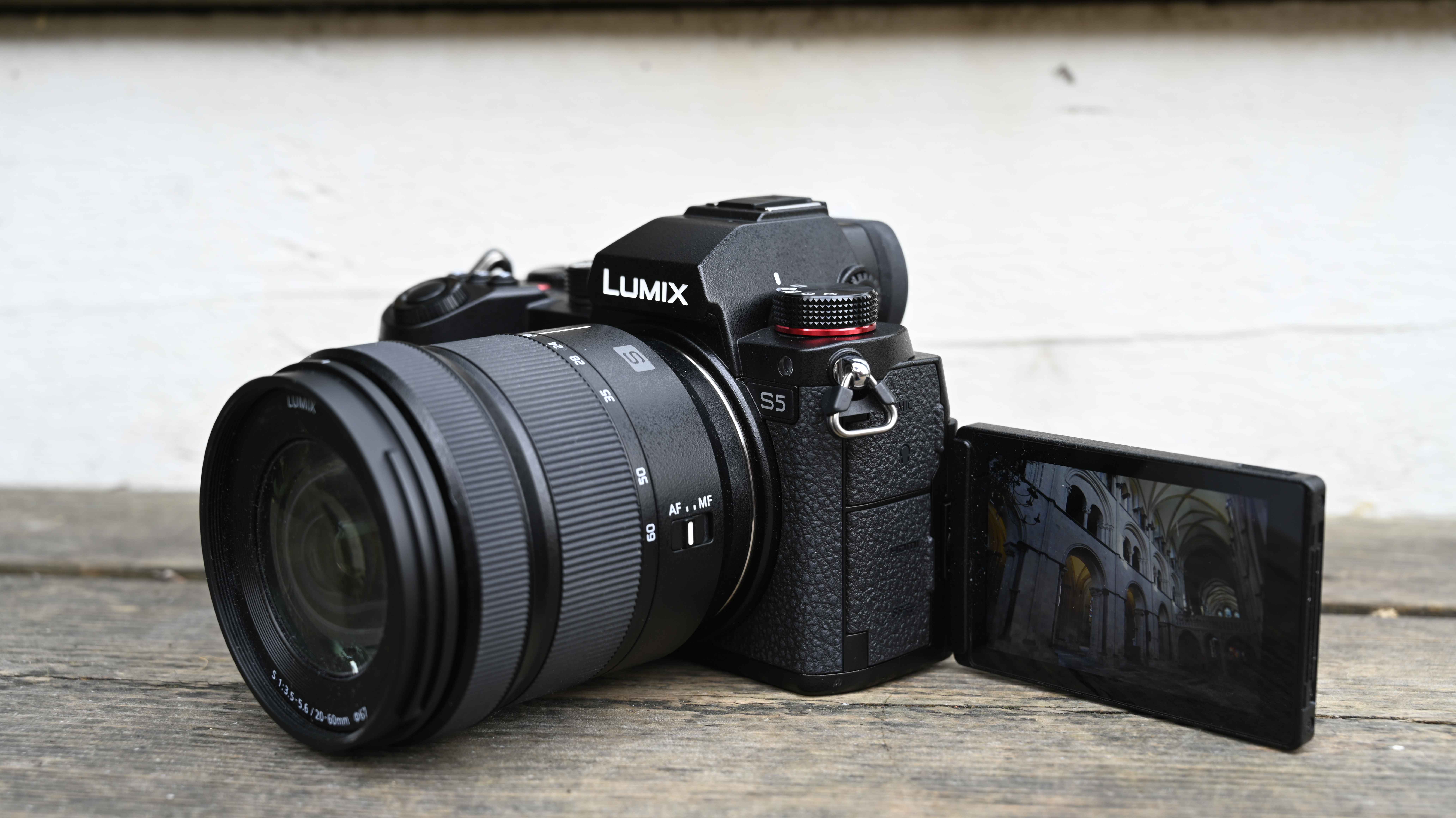
Panasonic Lumix S5 price and release date
- The Lumix S5 was announced on September 2, 2020
- Available to buy body-only now for $1,999 / £1,799 / AU$3,199
- Or with the 20-60mm f/3.5-5.6 lens for $2,299 / £1,999 / AU$3,669
The Panasonic S5 was announced back at the beginning of September 2020, with an on-sale date of later that month.
You can buy the S5 body-only for $1,999 / £1,799 / AU$3,199, which would make a lot of sense if you’ve already invested in the S series and are looking for the S5 as a good backup. However, it’s likely that most people will be buying the S5 with the kit lens, which is a 20-60mm f/3.5-5.6 affair.
You pick up the S5 and the 20-60mm lens for $2,299 / £1,999 / AU £3,669, which makes it the most affordable S series camera to date. It also puts it in a similar price bracket as other full-frame mirrorless models, including the Nikon Z6, Canon EOS RP and the Sony A7 III.

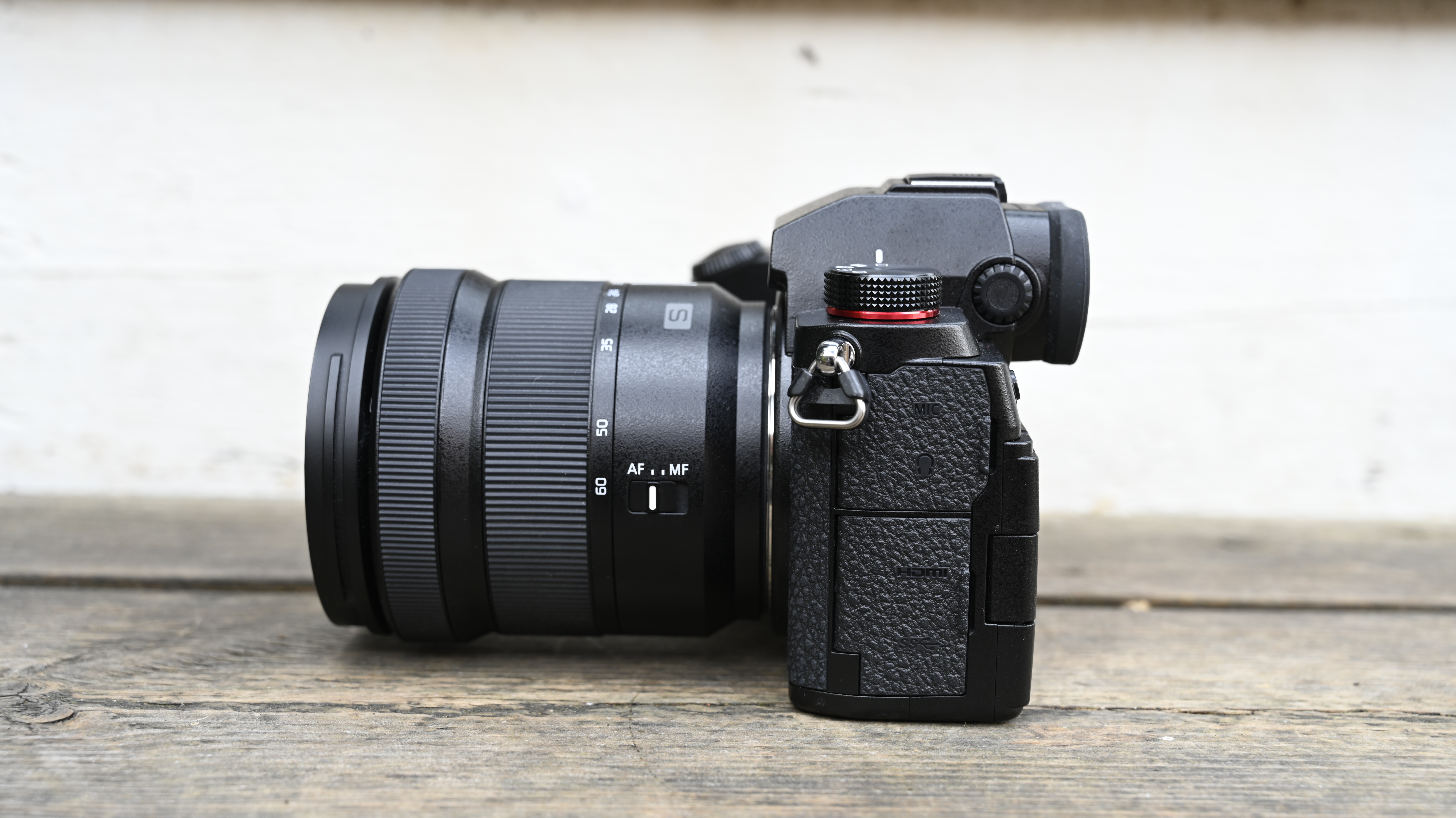

Design and handling
- Full-frame sensor in a body smaller than the Panasonic GH5
- Fully-articulating, 1.84m-dot touch-sensitive screen
- Lots of direct access buttons and dials
One of the key criticisms of the original Panasonic Lumix S1 and S1R cameras was their very large size and weight. Panasonic has been very keen to address that issue with the S5, managing to shrink down all the key components into a body which is smaller and lighter than the Lumix GH5 – one of its Micro Four Thirds models.
This very much feels like the camera Panasonic should have used to launch the S series, keeping the form factor that had already proved popular but increasing the size of the sensor within.
At this point it’s also worth mentioning the 20-60mm lens, which is included as part of the S5 kit package. This is a small and neat lens, which makes it an ideal partner for the S5. The problem is that other L Mount lenses aren’t necessarily so diminutive, especially the proprietary Panasonic offerings. Still, a new, smaller camera could mean that smaller lenses are indeed on their way. Being part of the L Mount alliance means you can also use the S5 with Sigma and Leica lenses, which gives you further options, too.
The Lumix S5 feels and operates very much like any other Lumix camera you may have used in the past. While that means it might not be the sleekest and most attractive camera on the market, it is extremely functional. The chunky grip sits extremely comfortably in the hand, with a moulded rest on the back of the camera to help your thumb sit very naturally on it.
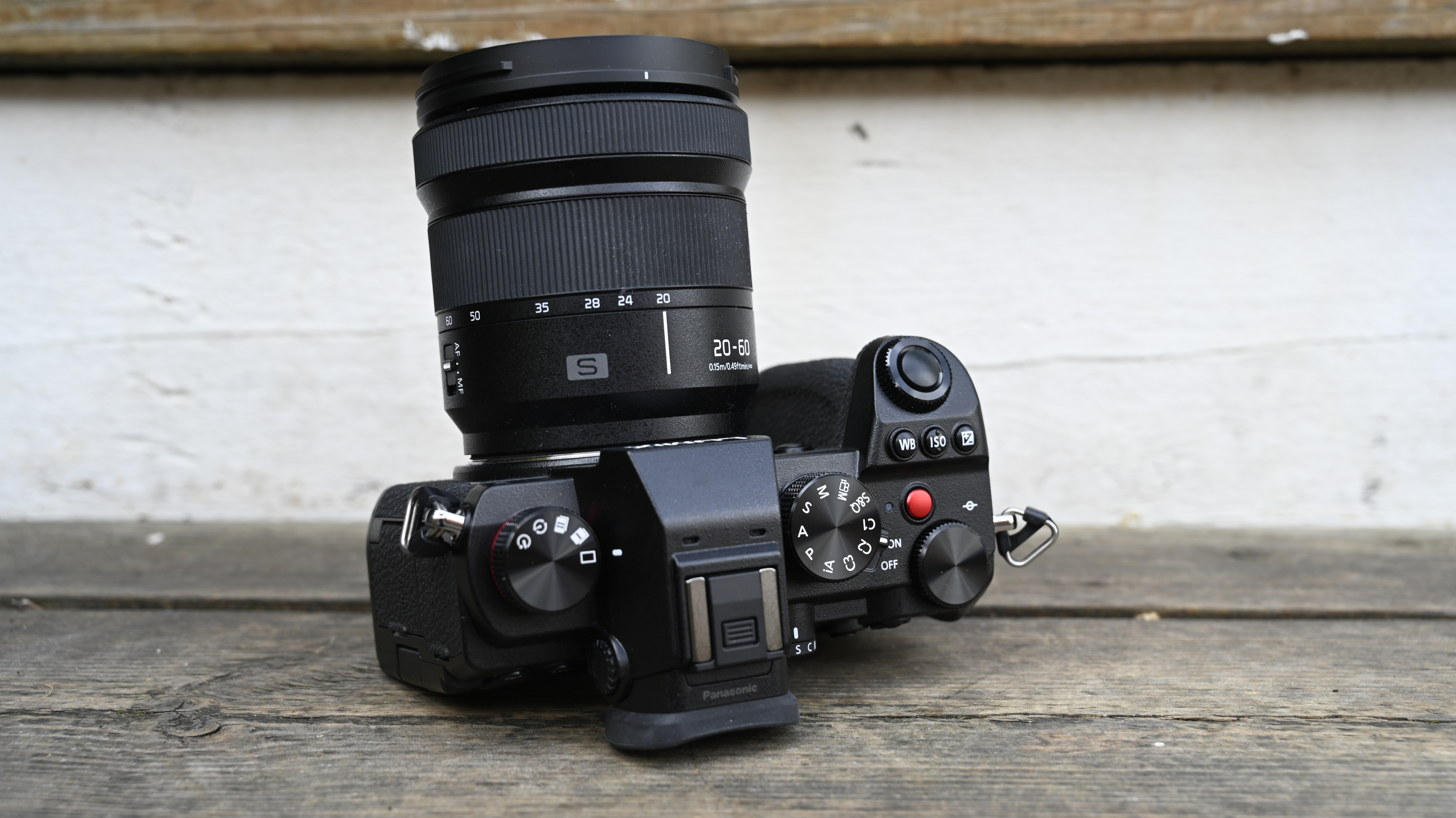
Just because Panasonic has shrunk the camera, it doesn't mean you don't get a good array of direct access control buttons and dials. The largest of these is the exposure mode dial, which sits just to the right of the electronic viewfinder (EVF). Here you’ve got all the usual range of modes (including P/A/S/M) as well as a trio of customizable slots, which are likely to appeal to those shooting either stills or video in certain scenarios reasonably often.
To the left of the EVF is another dial which you can use to set the drive mode. Here you can set single shooting, timer mode, interval shooting and activate one of the burst modes. There are two burst mode positions on the dial, which you can assign to either high, medium or low burst shooting, or Panasonic’s 6K shooting setting (we'll discuss this more on that in the 'specs and features' section).
A set of dual dial control dials sit where your forefinger and thumb naturally rest, allowing you to adjust shutter speed and aperture, depending on which shooting mode you’re working in. In the main menu you can set different configurations for how each dial works, and even change the direction of the dials if you like.
On the top plate you’ll also find a cluster of three buttons for directly accessing white balance, ISO and exposure compensation settings. There’s also a red button which you can use to activate video recording – a nod to the video users that Panasonic also generally aims its cameras at.
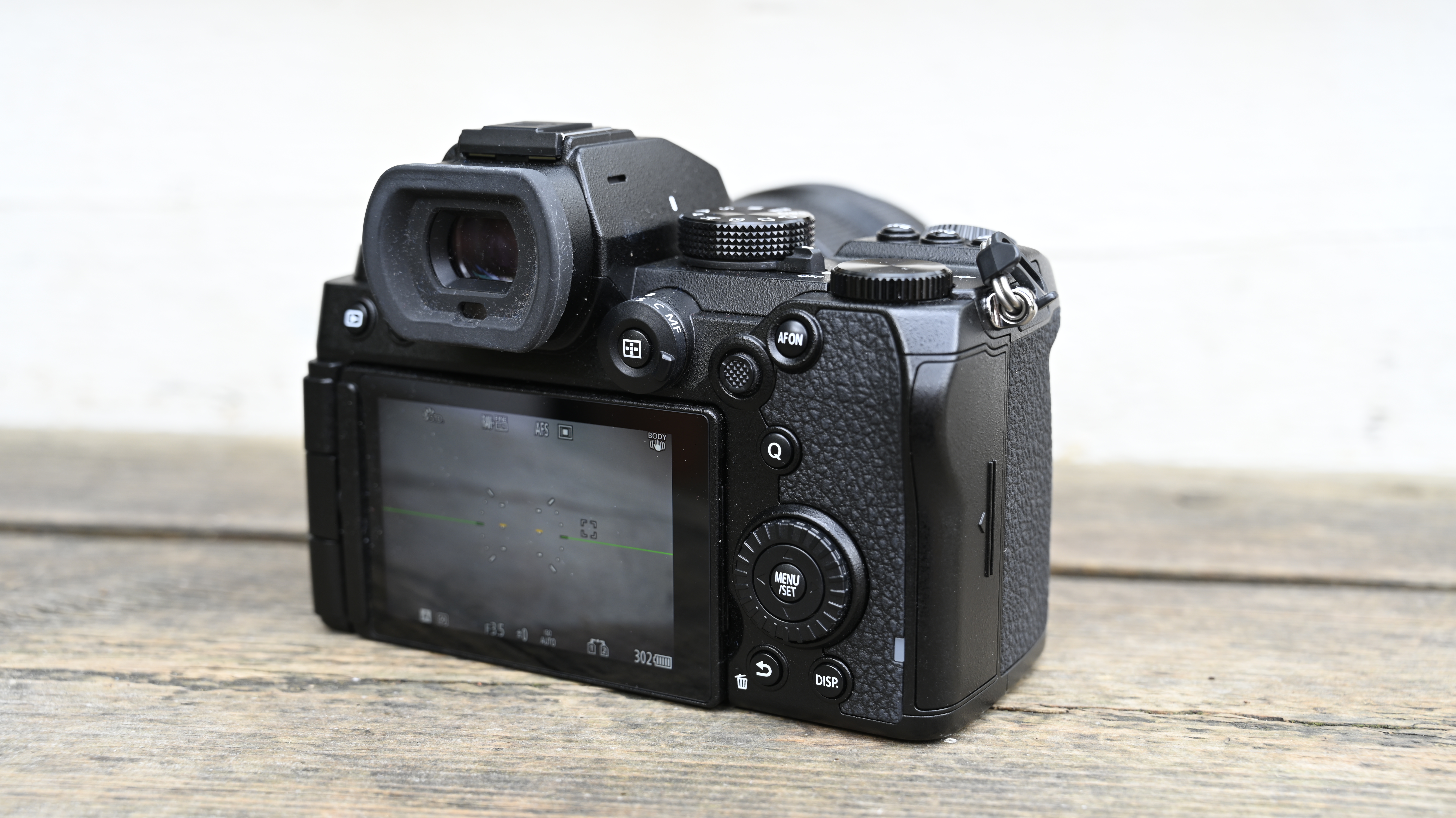
Flip to the back of the camera and there’s another good set of controls. Most of these are found on the right hand side of the camera, which makes it easy to operate the Lumix S5 one-handed.
There’s a 'Q' button for speedy access to a number of often-used settings, which can also be customized to include your own personal preferences. A joystick is found just above the 'Q' button, which you can use to move the focus point around the frame, as well as to navigate around the menu systems and images in playback.
Like the other cameras in Panasonic's S series, the S5 has dual SD card slots. although only one of the card slots is compatible with the faster UHS-II SD cards. In the main menu you can set the function of the second slot – whether you use it as overflow, for backup or to to store different kind of files from the card in the first slot.
On the opposite side to the card slots, you’ll find several input and output ports. There’s a microphone port, a headphone port, and a USB-C port which you can use to charge the battery in camera. There’s also an HDMI port, but some video makers might be disappointed to see that it’s not a full-sized port – a decision which was presumably made to help keep the size down.
Another disappointment with the original S series cameras was the fact that the screen could only tilt, rather than flipping round to the front. That was particularly problematic for video makers or vloggers who want to record themselves. Here, with the S5, it's fixed that problem by including a fully-articulating screen that can face forwards and has the added bonus of folding away when not in use.
Specs and features
- Impressive 24.2MP full-frame sensor
- Shoots 4K 10-bit video internally
- Viewfinder is a fairly standard 2.36m-dot 0.74x OLED affair
The Lumix S5 uses the same sensor as the older (and larger) Lumix S1, which is good news. This means you get a 24.2MP full-frame CMOS sensor that we’ve already seen perform very well elsewhere.
As a cheaper model, the Lumix S5 has naturally made some compromises elsewhere. A good example is the electronic viewfinder. The S1 has a 5.76m-dot viewfinder, one of the highest resolutions around. It’s not surprising to find a less advanced version on the S5, which is a 2.36m-dot 0.74x OLED affair. In isolation, it’s a great viewfinder that gives you a good view of the scene and and is very usable. So unless you also happen to have a Panasonic S1 or S1R, it’s unlikely you’ll be too disappointed with what’s on offer here.
Another criticism of the original S1 cameras was their autofocusing, which could be a little slow and unpredictable at times. For the S5, Panasonic claims it has “rewritten the algorithm” and essentially started again. Still, it continues to use a contrast-based detection system with DFD (depth from defocus) technology to assist it, rather than a phase detection or hybrid system that we see on many of its rivals.

Panasonic has always been a key player in the video camera space, and the S5 is clearly hoping to attract vloggers or anyone looking for a hybrid video-stills camera that's not as big and bulky as something like the S1, or especially the S1H.
As such, it’s got a number of impressive video specifications. The S5 can shoot 4K at 60p (with a crop applied), or at 30p and using the full sensor. Internally it can record at 10-bit, which has been a key part of the Panasonic Lumix GH5's appeal. If you're looking to shoot lots of 10-bit 4K, one thing to note is that you are restricted to a 30-minute continuous recording time (although you can start recording again once it stops). If you need an unlimited recording time, you can switch to 8-bit.
The S5 also offers V-Log recording with 14 stops of dynamic range, time-lapse recording, dual native ISO and anamorphic 4K. The vari-angle LCD is likely to appeal to vloggers and video makers, while the in-built image stabilization (IBIS) is also something that should come in very useful. The biggest compromise when it comes to video – aside from that continuous recording limit – is perhaps the inclusion of a Micro HDMI port, rather than a full-sized one. Micro HDMI cables tend to be much more prone to breaking than their full-size equivalents, but it's not a deal-breaker.
Performance
- Fairly pedestrian 7fps shooting speed (though you can use 4K/6K photo)
- Improved autofocus from previous S series cameras
- Decent battery life for hobbyist shooters
If you’re looking for a camera to shoot lots of sports or action, the Lumix S5 is unlikely to be the one you plump for. It offers a mid-range max burst shooting speed of 7fps, which although useful for capturing predictable action or the odd moment of your kids or pets running around, is a bit limiting for those who make a habit of shooting action.
Still, the S5 does compensate a little with Panasonic’s 4K/6K Photo options, which let you record at 30fps and extract the shot you need later down the line. Using the 6K option, you can extract 18MP stills, which should be good enough for most scenarios. But it does take a little bit of effort afterwards to sift through the images captured and save the shot you want.

When it comes to autofocus, there’s a noticeable improvement from the S1/S1R, and it proves to be very effective in most situations – there’s certainly very little hunting around or background pulsing. It copes well following subjects that move in a predictable pattern, while the ability to recognize subjects including eyes and heads are useful for photographing portraits and people shots. The good news for anybody who owns an S1 or S1R or S1H is that a firmware update will bring the same autofocus improvements to those models too.
The official battery life rating of the S5 is 440 shots (via the rear monitor), or 470 shots via the EVF. You can also enable a power-saving mode which will deliver 1,500 images.
In real-world use, the S5 should last for a full day of moderate use, especially when engaging in power-saving tactics of your own, such as switching it off between shots. If you’re somebody that wants to shoot lots of 4K clips in a day, it may be worth investing in a second battery. You can also charge the S5 via USB, so an alternative would be a high-capacity power bank for charging on the go, too.
Image and video quality
- Has an ISO range of 100-51200 (expandable to ISO 50 and ISO 204800)
- Tried-and-tested sensor delivers excellent imagery
- Full-frame low light performance in a compact body
We weren’t expecting too many surprises from the S5 in terms of image quality, as we’ve already seen its sensor in action elsewhere. And it did indeed turn in an excellent performance – it’s capable of producing highly detailed shots with warm and vibrant colors in a wide variety of situations.
What you essentially get is full-frame performance from a Micro Four Thirds body, which is especially good news for those who like to shoot frequently in low light. At ISO 6400, there’s barely any noise visible and image smoothing is kept fairly well under control. You can see some slightly smudgy areas if you examine closely at 100%, but otherwise the overall impression is great.







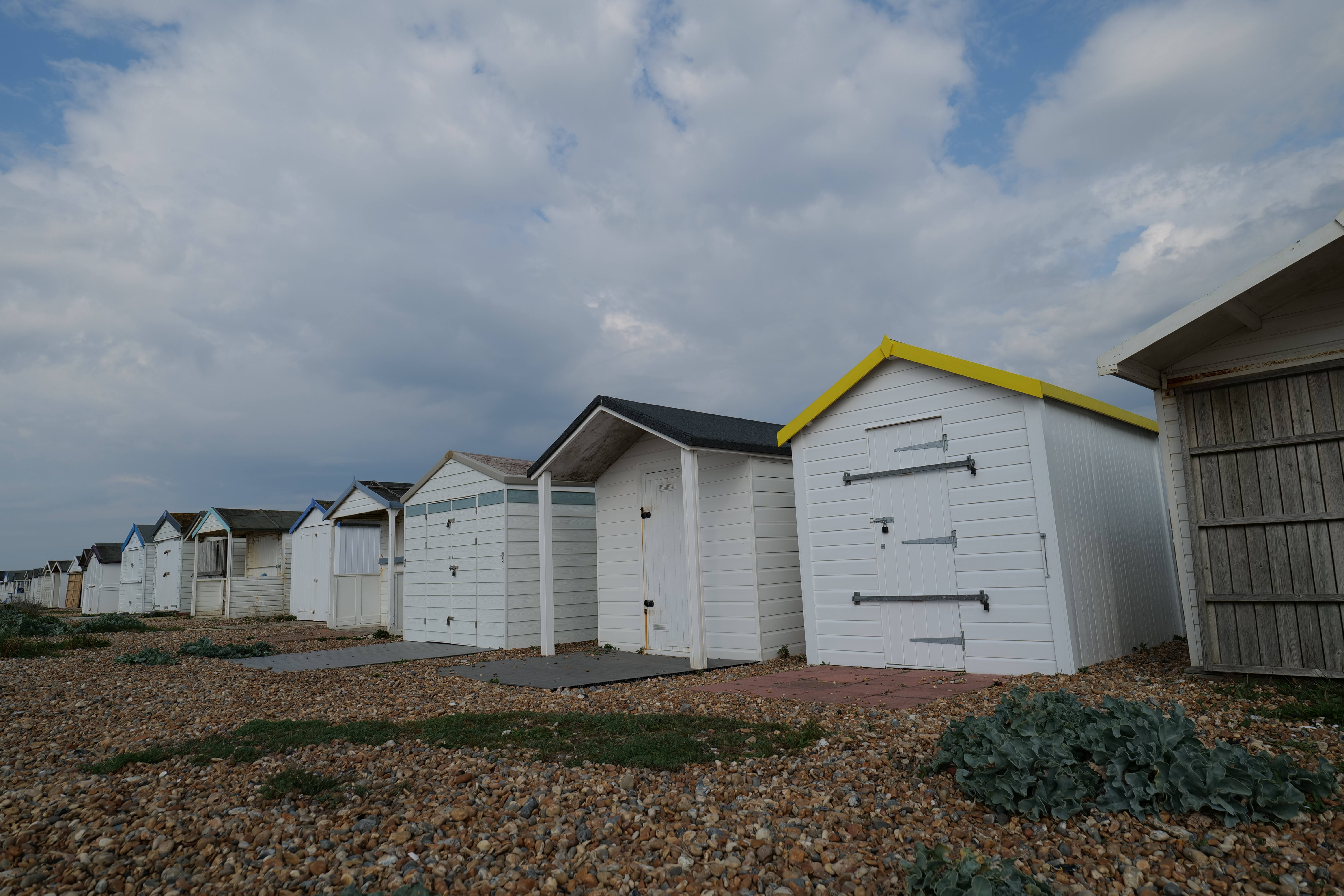


As you’d expect, if you head into the upper echelons of ISO 51200 – and the expansion settings – noise and image smoothing increases dramatically, so it’s best to stay away from those unless absolutely necessary.
On the whole, the S5’s all-purpose metering setting does a good job of keeping images well-balanced, but it can struggle a little with very high-contrast situations. That said, detail can be extracted well from the files in post-production, so if you’re prepared to do a little work it’s not too much of a concern.
The 20-60mm kit lens is a good walk-around lens, and it makes a lot of sense as a travel lens. The 20mm end is nice and wide, which is great for both shooting landscapes, but also for vloggers who want to present to camera while walking along. The lack of a crop at 4K/30p is a benefit that puts it ahead of the Nikon Z5, which applies a fairly heavy crop at 4K.
Speaking of video, the results here are also very good, as we’d expect from a Panasonic camera. Image stabilization does a decent job of keeping shots nice and smooth, while the AF-C setting was able to follow us as we moved around the frame while walking and talking.
Sound quality is good, but the built-in microphones suffer somewhat from wind interference, even when it doesn’t feel like you’re in particularly windy conditions (as you can see in the videos above). If you’re somebody who is planning to record a lot of video outside, it’s certainly worth investing in an external microphone.
Should I buy the Panasonic Lumix S5?
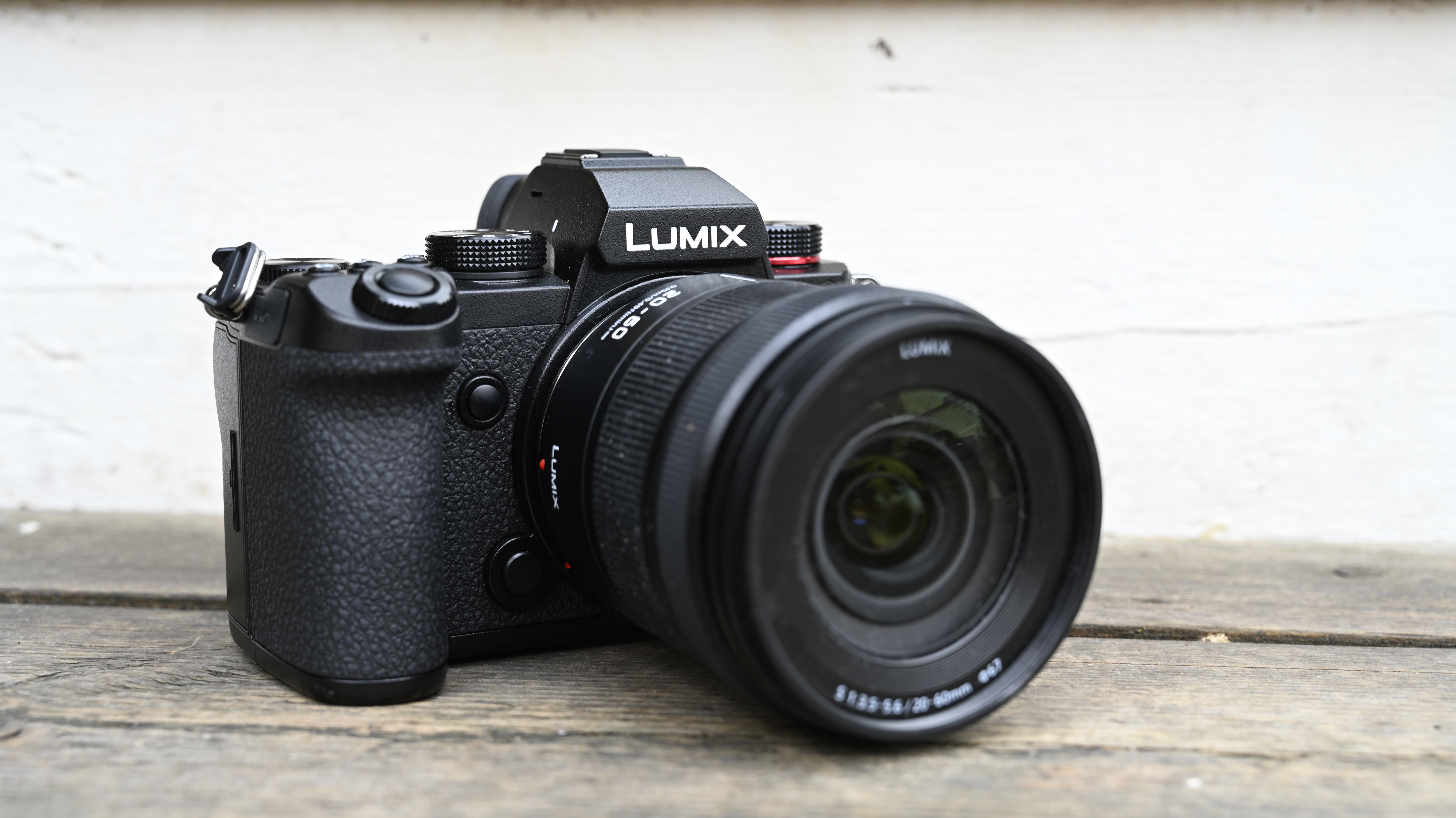
Buy it if...
You want a well-rounded hybrid camera for video and stills
Panasonic has long been known for its video credentials, and the S5 is one of the best mirrorless cameras for those who want to shoot an even mix of still and moving images. It doesn’t have quite the S1H's full gamut of video skills, but for a much smaller camera it’s impressive. Uncropped 4K/30p video elevates it above many rivals, while other specs like V-Log recording and Dual-Native ISO make it very appealing for those who shoot a lot of video.
You want a compact, travel-friendly full-frame camera
One of the key criticisms of the original S series cameras was their large size and weight. For a company that pioneered small cameras with the Micro Four Thirds format, it was a bit of a departure. That’s been well and truly addressed here with a body that is smaller than the popular GH5. Pair it with the 20-60mm kit lens and you’ve got a nifty little camera that's ideal for travel and everyday shooting.
You're an S series fan who needs a smaller second camera
If you’ve already invested in Panasonic’s S series, then the S5 is a good complementary body to have in your kit bag. It would work well for travel shoots, as well as off-the-cuff content creation and vlogging, alongside your more serious main camera.
Don't buy it if...
You want to shoot action
With a fairly modest 7fps shooting speed, this isn’t really the camera for shooting fast action and wildlife. While you can use Panasonic’s fantastic 6K Photo mode to grab 30fps and extract 18MP stills, it’s not quite the same as having large raw files to work with. You’ll also have to find the time to scroll through your clips to extract the stills you want in camera, which adds an extra layer of work.
You’re a full-time professional videographer
Although the S5 is fantastic for video, it’s more suited to lighter work and vlogging and won’t quite meet the demands of a full-time professional. Luckily, Panasonic has better cameras in its arsenal, like the Panasonic Lumix S1H, for those need 6K, 10-bit full-frame capture.
You want a small system that is highly portable
Panasonic has shrunk the S5 down very well and produced a good-sized, portable camera well suited to travel. However, 20-60mm kit lens aside, other S series lenses are still very large. There may be smaller optics available elsewhere from the L Mount Alliance, but if you’re hoping to pack a camera plus a slew of travel-friendly optics, this is probably not the one for you.
- These are the best full-frame cameras you can buy right now
- Or check out our guide to the world's best cameras for photography

Amy has been writing about cameras, photography and associated tech since 2009. Amy was once part of the photography testing team for Future Publishing working across TechRadar, Digital Camera, PhotoPlus, N Photo and Photography Week. For her photography, she has won awards and has been exhibited. She often partakes in unusual projects - including one intense year where she used a different camera every single day. Amy is currently the Features Editor at Amateur Photographer magazine, and in her increasingly little spare time works across a number of high-profile publications including Wired, Stuff, Digital Camera World, Expert Reviews, and just a little off-tangent, PetsRadar.
